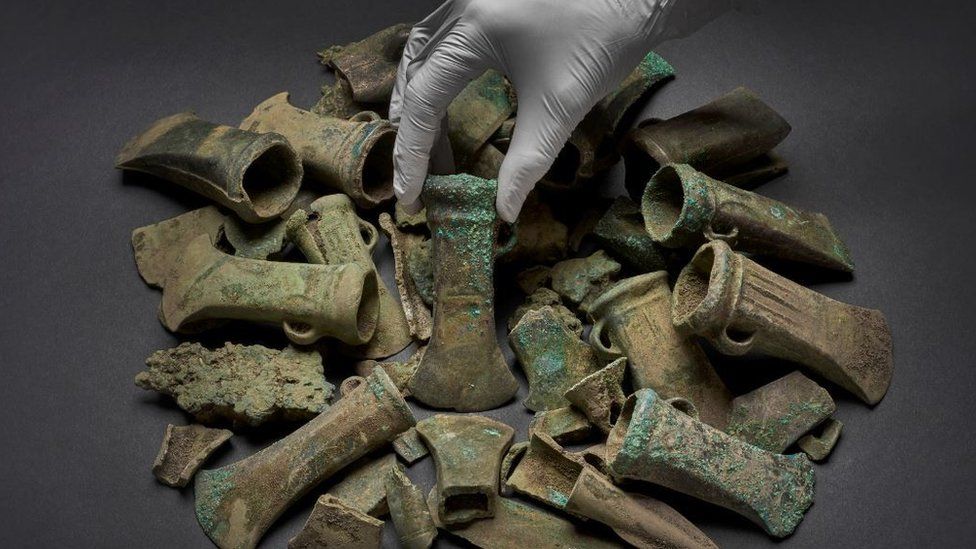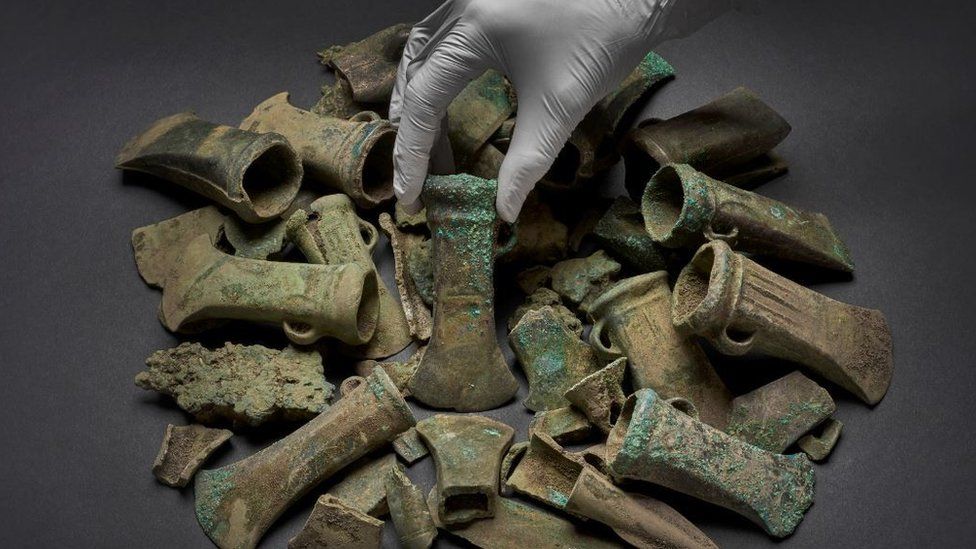

Scientists have uncovered evidence for a large-scale, prehistoric migration into Britain that may be linked to the spread of Celtic languages.
The mass-movement of people originated in continental Europe and occurred between 1,400 BC and 870 BC.
The discovery helps to explain the genetic make-up of many present-day people in Britain.
Around half the ancestry of later populations in England and Wales comes from these migrants.
It’s unclear what caused the influx of people during the Middle to Late Bronze Age, but the migrants introduced new ritual practices to Britain.
The results, published in the peer-reviewed journal Nature, are based on DNA extracted from 793 ancient skeletons.
The study reveals that a gene allowing some people to digest raw milk increased rapidly in Britain during the Iron Age – 1,000 years before the same thing happened elsewhere in Northern Europe. It’s an extraordinary example of natural selection for a genetic trait, and the reasons for its spread remain a mystery.
The researchers identified four skeletons at the archaeological sites of Cliffs End Farm and Margetts Pit in Kent that were either first-generation migrants from continental Europe, or their descendants.
It’s evidence for pioneer settlement of the region from the continent, starting as far back as 1,400BC.
At first, said Dr Thomas Booth, from the Francis Crick Institute in London, people with the new, continental ancestry “appear almost exclusively in Kent… but we don’t really see them anywhere else and we don’t see a change in the overall ancestry of Britain.
But the new DNA signature soon spreads: “From around 1,000BC, suddenly that ancestry seems to disperse all the way through southern Britain, particularly,” he explained, adding: “There’s no particular genetic change in Scotland, but everywhere in England and Wales, this ancestry has an effect.”
Prof David Reich from Harvard Medical School in Cambridge, US, who led the research, told BBC News: “We estimate that about half the DNA of people in the Iron Age in Britain comes from these new migrants. What that means is if you trace back the ancestors of these Iron Age Britons 20 generations before the time they lived, half of them would not be living on the island of Great Britain.”
As for where the initial migrants originated in continental Europe, their closest matches are with ancient populations in France. But says Prof Reich, “We don’t yet have adequate sampling to directly confirm that or to see where exactly in France it would be.”
When the newcomers arrived, the existing British population traced most of its ancestry to people who arrived at the end of the Neolithic, around the time Stonehenge was being built. They were part of a tradition known as the Beaker Culture.
The later, mid- to late Bronze Age movement of people brought new cultural practices to the country. This included the intentional burial of multiple Bronze objects – known as hoards – perhaps as offerings to the gods.
[“source=bbc”]




